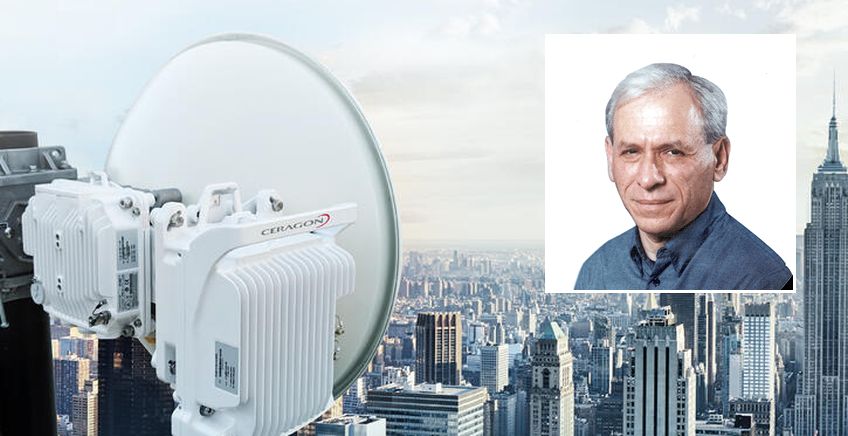The revenues were good enough, so what is the problem with Intel?
26 April, 2016
The recently announced restructuring plan may be too small and too late: It's not about mobile or technology - but the archaic business model of Intel Corp

The recently announced restructuring plan may be too small and too late: It’s not about mobile or technology – but the archaic business model of Intel Corp

Roni Lifshitz, Editor
Recently Intel Corp has announcement a major restructuring plan, including massive layoffs of 11% of its workforce (about 12,000 employees). The announcement have attracted so much media attention, that the actual finanical reports were somewhat neglected. A sense of Panic prevailed and many headlines screamed out imminent doom.
The problem is that the financial report is not that bad – actually pretty good. Intel reported revenues of $13.7 billion in Q1 2016, compared to $12.8 billion in Q1 2015, and net profit of $2 billion, the same as in Q1 2015. The comparison between Q1 2016 and Q4 2015 provided another misleading figure: Intel reported an 8% drop in revenues. But the 2014/2015 transition were even worse: 13% drop in revenues. The same applies to 2013/2104. It means that this decline is a seasonal phenomenon.
The promised land of mobile
When we examine Intel’s revenues segment by segment, we see that the PC Division revenues have grown by 2% to $7.5 billion. Data center division sales grew by 9% compared to the same quarter of 2015. The prevailing assumption in the market is that Intel’s problem stems from its failure to join the mobile revolution. This assumption is based on an abundance of data indicating the decline of the PC and the rise in smartphone and tablets.
Only recently, Gartner estimated that the volume of PC shipments has dropped by 9.6% in Q1 2016 compared to the same quarter of 2015, totaling in 64.8 million units. This is the sixth consecutive quarter in which PC shipments shrink. On the other hand, IC Insights estimated a couple of weeks ago that applications processor sales for smartphones will grow by 10% in 2016, while the sales of processors for PC and servers will grow by a mere 2%.
If the mobile market is Intel’s soft point, how come that Qualcomm – the “ultimate mobile” company – has reported a 19% drop in Q1 2016 revenues? IDC Research, also, is not impressed by the mobile market: It forecasts a 5.7% growth of the mobile market in 2016, compared to 10.4% in 2015. Even if Intel were to become a leading mobile company, its position would not dramatically be improved.
Dinozaurs don’t like cheap chips

So what is the problem with Intel? The stock market valuation of the leading semiconductor manufactures traded alongside Intel provide an important clue. Smasung Electronics is currently valued at $ 138 billion. Taiwanese TSMC is valued at $125 billion and Mobile market leader Qualcomm is valued at $79 billion. Each of these companies has a much better employees/value ratio than Intel.
Interestingly, each company has a completely different business model: Intel focuses on the development, manufacturing and sale of processors based on its own proprietary architecture. Samsung is a systems company that produces processors as well, but uses these in for developing its own end user systems such as smartphones, TVs, Tablets and more. TSMC is a semiconductor manufacturing contractor: it produces chips for other companies and thus, focused on reliable, streamlined and cheap FAB sevices. Qualcomm is a Fabless company – it has no manufacturing plant. Qualcomm designs chips to be produced by contractors (it is in fact one of TSMC’s major clients).
On the other hand – Apple is valued at $586 billion, Microsoft at $378 billion and Google at $474 billion. The gap between specialized semiconductor manufacturers and companies supplying complete integrated solutions (hardware, software and services) is constantly growing.
In fact, Intel is the last leading company still holding on to the classic semiconductor model – focusing solely on its own technology, from development to production and sale. In that sense, the term “Dinosaur” is perfectly describes Intel. Other similar semiconductors giants have experienced increasing difficulties in recent years, resulting in a huge wave of mergers and acquisitions in 2015. Actually’ last year we so approximately $117 billion M&A deals – about 5 times more than 2014.
Time for change
When Semiconductor market is stalling around the $340 billion mark, refusing to grow due to difficulties in adopting new technologies, Intel must modernize its antiquated business model. It did not disclose yet details concerning the restructure and its goals, except for the vague statement that it will accelerate the parting from the PC market as its main market, to move to the Cloud and billions of connected devices.
In order to do so, Intel has to adapt itself to the modern market. The main challenge is to find an adequate solution for the Microsoft problem. Intel position as market leader in the PC era, was a result of its fruitful symbiosis with Microsoft: Intel provided the processors, while Microsoft took care of the software atmosphere supporting the chips.
Today, Intel has to build its own “Software Planet”, an impossible feat without a strategic synergy with an existing software producers, or adopting radical Open Source strategy. So radical would this strategy have to be, that even Intel’s architecture would have to be available in a form of open source IP. Availability will not suffice – Intel will have to push it down the markets throat, to seduce the software and developer communities, to produce cooperation’s with manufacturing contractors like TSMC for example, in order give them incentives to develop new processes perfectly suited to x86 architecture.
Naturally, Intel has to cling to the cloud – this is Intel’s strongest segment, and a constantly growing one. One has to bear in mind that behind every mobile application stands a cloud server – and more often than not – it’s an Intel’s. But the processor is only one piece of the puzzle, and if Intel will fail to become a cloud system company – its processors are bound to be sooner or later replaced by much cheaper servers based on processors manufactured by lean and cheap companies (Fabless companies receiving efficient manufacturing services).
A brave new culture
Even Intel itself has to become a partially Fabless company. Why should its plants produce processors and SoC components that can be produced much cheaply by specialized contractors? The transition to semi-complete solutions is one of the main trends in the semiconductor industry today: System on Board solutions are sold at an attractive price, enabling vendors to concentrate on the final product.
Though Intel is already playing in this field, a company the like of Intel should not just “be there”, it should lead this trend. Most important of all, Intel has to supply software solutions from chip to cloud. It may very well be that changes of this magnitude require drastic measures, even dividing Intel into separated independent companies. Layoffs and a redefinition of technological goals are certainly not enough.
This is because changing in Intel’s organizational culture is a must. Intel has to become a company willing and able of speaking with thousands of small costumers, and not only a dozen of big players. This is the new face of the electronic industry, and Intel has to adapt.
In the bottom line, Intel’s problem is not a technological gap or a failure to dominate the mobile market – but its old fashioned business model.
Posted in: Business , Featured Stories , News , Semiconductors


